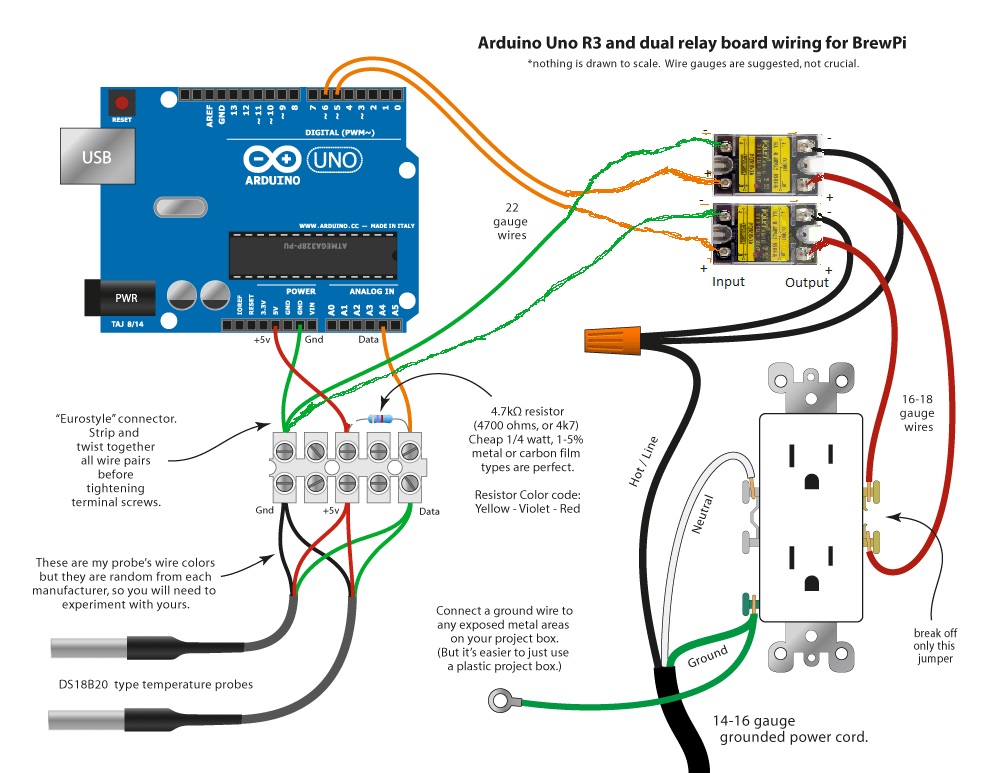Brewski_59
https://www.facebook.com/narcosisbrew/
I've found that the refrigerators compressor can spike the display when it switches on and off, to address that I soldered a 100Uf capacitor on the power input to filter that out. which solved that issue. But I still get occasional display issues I can't explain, such as characters where there should be none, but its not as bad. To deal with that I just installed a reset switch on the side of the case and wired it to the reset pin on the uno and gnd. Now if the display is dirty, I just press that and go on with life.I'm using the Sainsmart relay card from the original post. The BrewPi runs flawlessly and the web interface is all you need, but darn it if it isn't cool to have the LCD screen on the box. My ten year old discovered the scramble. He told me that the screen changed to Chinese.
There is a lot of information about displays in this thread https://www.homebrewtalk.com/showthread.php?t=510036



























![Craft A Brew - Safale S-04 Dry Yeast - Fermentis - English Ale Dry Yeast - For English and American Ales and Hard Apple Ciders - Ingredients for Home Brewing - Beer Making Supplies - [1 Pack]](https://m.media-amazon.com/images/I/41fVGNh6JfL._SL500_.jpg)
































